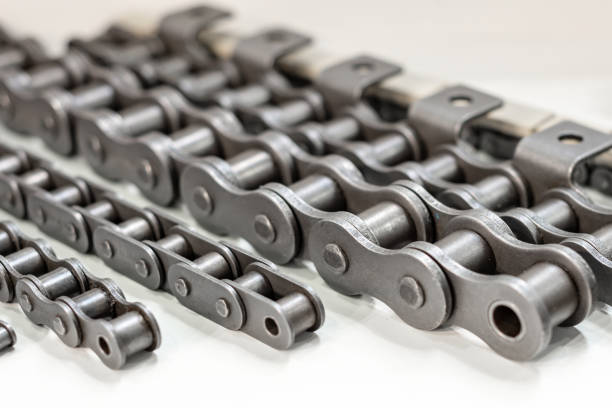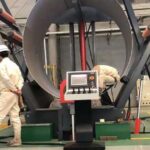In the domain of modern industries, developments are orchestrated to synchronized movements that are imperative for seamless industrial operations. As industries persistently strive for heightened efficiency and unwavering reliability, the significance of these steadfast linkages becomes progressively more pronounced.
Chains and roller chains play a pivotal role in intricate manufacturing processes, quietly ensuring efficacy and reliability. They have become foundational to today’s industries, showcasing how simple elements hold significant influence over performance and dependability. Explore the inherent transformative power of chains in modern manufacturing.
Impact of Chains and Roller Chains on Modern Manufacturing Performance and Reliability
Chains and roller chains profoundly influence modern industries, significantly shaping the performance and reliability of contemporary materials and manufacturing processes. This impact is multi-faceted and extends across various vital aspects:
- Precision Power Transmission
Chains and roller chains serve as potent conduits for power transmission, effectively channeling motion and torque within machinery. By upholding meticulous engineering standards, roller chains ensure seamless and efficient power transfer, thereby sustaining consistent and dependable performance throughout industrial operations.
- Elevated Durability and Dependability
Anchored in cutting-edge design principles, modern roller chains are engineered to endure formidable loads, operate at high velocities, and endure the rigors of harsh operating environments. This heightened resilience, stemming from the integration of high-grade materials and advanced manufacturing techniques, translates to heightened equipment durability and operational dependability.
- Unwavering Precision and Uniformity
Roller chains exemplify meticulous engineering designed to uphold impeccable pitch and roller spacing standards. This commitment to detail ensures a seamless and consistent power transmission, making them indispensable in sectors reliant on exacting tolerances and minimal variability. This unwavering precision plays a pivotal role in maintaining the utmost integrity of manufacturing processes, where even the slightest deviation can have significant repercussions.
- Mitigated Maintenance Demands
Well-maintained roller chains significantly mitigate downtime and maintenance expenses by maintaining their operational integrity over extended periods. Their extended lifespan and reduced reliance on frequent lubrication and adjustments contribute to operational efficiency and cost-effectiveness.
- Optimized Energy Transfer
Roller chains excel at preserving energy by minimizing dissipation during power transmission, courtesy of their inherently efficient design. This attribute holds immense value in contexts where prioritizing energy conservation is imperative, ultimately amplifying the comprehensive efficiency of industrial processes.
- Versatility of Material Compatibility
Adaptable to diverse materials, ranging from metals to plastics and composites, roller chains exhibit versatility that resonates across a spectrum of industrial applications. This adaptability augments the flexibility of modern manufacturing processes, fostering innovation and customization.
- Automation and Robotics Synergy
Within domains characterized by automation and robotics, roller chains assume a fundamental position in the transmission of motion and power to robotic components. Their precision and unwavering reliability form the bedrock of accuracy and efficiency in robotic operations, further highlighting the advancement and transformation of these industries.
- Velocity-Optimized Operations
Tailored for high-speed applications, modern roller chains adeptly navigate rapid operational cycles. These chains find applications in contexts such as conveyor systems, where products traverse various manufacturing stages at high velocities.
- Sustainability Integration
Specific roller chain variants seamlessly embrace environmental consciousness by integrating materials and lubricants that curtail ecological impact. This harmonious alignment resonates with the growing emphasis on sustainability inherent in contemporary manufacturing practices.
- Quality Assurance Pillar
The production of roller chains is characterized by stringent quality control measures and thorough testing protocols. These processes ensure strict alignment with the required performance standards and specifications, serving as a meticulous safeguard that enhances the quality of both end products and manufacturing processes.
Different Types Of Chains Based On Their Specific Applications And Examples
The diverse range of meticulously designed chain types highlights their adaptability and importance across industries. These chains are engineered to meet unique demands, playing a crucial role in ensuring smooth, efficient, and secure operations. Here are the different chain types, categorized by specific applications, along with illustrative examples:
- Chains for Lifting
These chains designs are strong and durable to handle the vertical lifting of heavy loads. They often feature more extensive links and are commonly used in applications where controlled lifting is essential, such as construction sites, warehouses, and shipyards.
- Example: Lifting chains are extensively utilized in overhead cranes to raise and lower heavy objects in manufacturing facilities or construction sites.
- Chains for Hoisting
Similar to lifting chains, hoisting chains are tailored for controlled vertical movement. They are used in applications where precise positioning is crucial, such as elevators and material handling systems.
- Example: In elevator systems, hoisting chains ensure the safe and reliable movement of passengers or goods between different floors in buildings.
- Chains for Towing
These chains are specifically designed to handle the stress of towing or pulling heavy loads. They are commonly used in vehicle recovery, agriculture, and transportation industries.
- Example: Towing chains are often employed by tow trucks to pull stranded vehicles or to recover vehicles involved in accidents.
- Chains for Securing
Chains used for securing cargo are designed to fasten and restrain items during transportation. They are essential for preventing cargo from shifting or falling off vehicles.
- Example: Securing chains are widely used in flatbed trailers and trucks to secure large and heavy items, such as machinery and construction materials, during transit.
- Chains for Conveying
These chains are integral components of conveyor systems, moving materials along production lines or warehouses. They are designed to endure continuous operation and varied environmental conditions.
- Example: In manufacturing plants, conveyor chains facilitate the smooth movement of products from one stage of the production process to another.
- Snow Chains
Snow chains are designed to provide vehicles with increased traction on snowy or icy roads. They wrap around tires to improve grip and handling in adverse weather conditions.
- Example: Drivers in regions prone to heavy snowfall often use snow chains on their vehicles to ensure safer travel during winter months.
- Decorative Chains
These chains serve aesthetic purposes and are commonly used in jewelry, fashion accessories, and architectural designs. They add visual appeal and elegance to various items.
- Example: Decorative chains are intricately woven into necklaces, bracelets, and other pieces of jewelry, enhancing their overall aesthetic value.
- Timing Chains
Timing chains play a crucial role in synchronizing the movement of internal combustion engines. They ensure the precise opening and closing of engine valves for optimal performance.
- Example: In automotive engines, timing chains coordinate the timing between the crankshaft and camshaft, allowing the engine to operate efficiently.
- Drag Chains (Cable Carriers)
These chains are utilized to manage and protect cables and hoses in moving machinery, such as robotics and automation systems. They prevent tangling and damage during dynamic operations.
- Example: In industrial robotics, drag chains guide cables and hoses smoothly as robotic arms move, ensuring reliable communication and fluid transfer.
- Leaf Chains
These are heavy-duty chains used in lifting applications that require high load-bearing capacity. They are commonly used in equipment like forklifts and construction machinery.
- Example: Leaf chains are a critical component in forklifts, supporting lifting heavy loads in warehouses and distribution centers.
- Transmission Chains
These transmit power between rotating components in machinery. They are essential for maintaining motion and power transfer in various applications.
- Example: Motorcycles utilize transmission chains to transfer power from the engine to the rear wheel, enabling movement.
- Silent Chains (Inverted-Tooth Chains)
These type of chains operate quietly and are employed in applications where noise reduction is crucial. They are often used in internal combustion engines and office equipment.
- Example: In automobile engines, silent chains help ensure quiet operation while maintaining precise timing between engine components.
- Lashing Chains
These are designed to secure cargo during transportation, preventing shifting or damage. They are essential for maintaining cargo integrity during transit.
- Example: Shipping containers on cargo ships are often secured using lashing chains to prevent containers from shifting in rough seas.
- Pendant Chains
These chains are used for hanging items such as jewelry pendants or decorative objects. They offer a simple yet effective means of suspending items.
- Example: Pendant chains are commonly used in necklaces to hold pendants or charms, adding a personalized touch to jewelry pieces.
- Energy Chains (Cable Carriers)
Energy chains, also known as cable carriers, protect cables and hoses in dynamic applications where movement is frequent. They ensure reliable cable management and prevent wear and damage.
- Example: Energy chains are a crucial component in industrial robots, guiding cables and hoses as the robot moves through its programmed motions.
Chains on Modern Manufacturing with Misumi
The transformative impact of chains on modern manufacturing is indisputable. They propel machinery and processes and form a linchpin connecting historical advancements with modern innovations. Chains have catalyzed the journey of modern materials and manufacturing processes, silently and resolutely advancing the industries that underpin our modern world.
These top-tier chains or roller chains to boost your industrial operations are available at https://th.misumi-ec.com. MISUMI is your trusted industry partner, offering components that enhance modern machinery’s efficiency and reliability. Discover our couplings, too – bridging gaps between misaligned shafts, enabling seamless power and motion transfer. Explore the diverse range on our platform, where quality and innovation converge to elevate industrial excellence.




